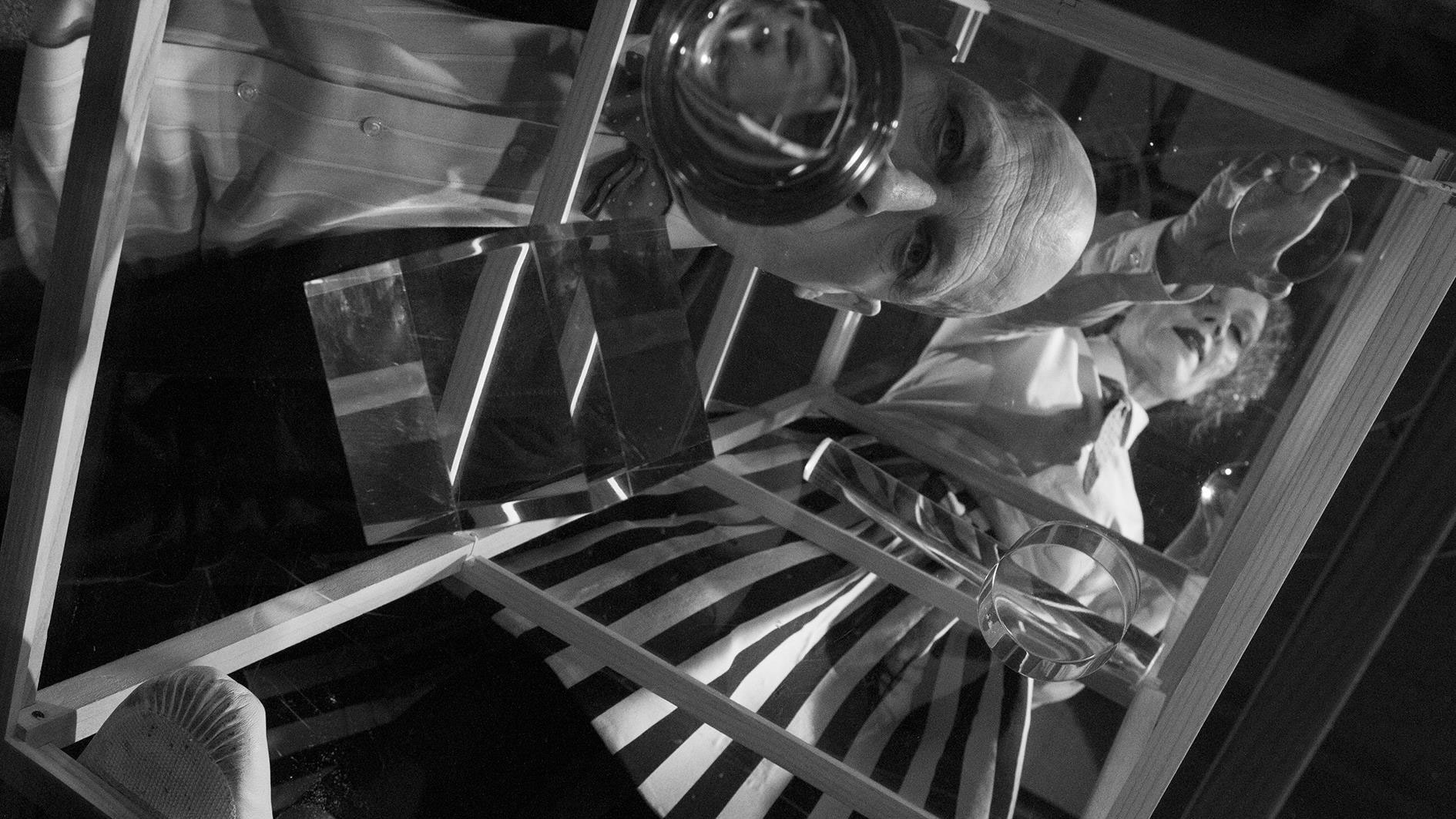This text is a revised and supplemented version of “Yurijibui munhwajeok gyebohak” (The Cultural genealogy of The Glass House), Bigyomunhak (Comparative literature), vol. 81 (2020). An abbreviated version of the latter was published in the catalog LEE BUL: Утопия Спасённая (Utopia saved) (Манежсс, 2020), 124–44.
For further details, see Soo Hwan Kim, “Sergei Tretyakov Revisited: The Cases of Walter Benjamin and Hito Steyerl,” e-flux journal, no. 104 (November 2019) →.
For the above, see Eisenstein Rediscovered, ed. Ian Christie and Richard Taylor (Routledge, 1993), 117.
Eisenstein traveled abroad for almost three years (September 1929 to May 1932) with cinematographer Eduard Tisse and assistant director Grigori Aleksandrov under the pretext of examining Western cinema’s sound technology. He gave lectures in various parts of Europe (Berlin, Zurich, Ghent, London, Paris, Amsterdam), met people like James Joyce, Bernard Shaw, Abel Gance, Louis Bunuel, Hans Richter, and Moholy-Nagy, and after signing with Paramount Pictures, went to the United States and communicated with well-known figures like Charlie Chaplin and Walt Disney. Later, while filming Que viva Mexico! in Mexico, he returned to the Soviet Union upon Stalin’s orders, leaving the film unfinished.
On January 24, 1927, about a month and a half after coming to Moscow, he saw the film with an interpreter, and two days later, on January 26, he wrote the review. The piece was published in Die Literarische Welt immediately after his return to Berlin in March 1927.
Walter Benjamin, “Reply to Oscar A. H. Schmitz,” in Selected Writings, vol. 2, part 1, 1927–1930, ed. Michael W. Jennings, Howard Eiland, and Gary Smith (Belknap Press, 1999), 17.
Benjamin, “Reply to Oscar A. H. Schmitz,” 16.
These intersections can also be identified through the common denominator of Baudelaire. As a precursor to his shock effect, Eisenstein quoted from Baudelaire’s journal in his 1929 essay “A Dialectic Approach to Film Form,” noting that “irregularity—that is to say, the unexpected, surprise and astonishment, are an essential part and characteristics of beauty.” Benjamin also connected the unexpected and the irregular in Baudelaire’s poetry to modern urban life in general and, formally, to methods of film. “In film, perception in the form of shocks was established as a formal principle.” See James Goodwin, Eisenstein, Cinema, and History (University of Illinois Press, 1993), 76.
Susan Buck-Morss, The Dialectics of Seeing: Walter Benjamin and the Arcades Project (MIT Press, 1989), 95.
Naum Kleiman, “Стеклянный Дом: С. М. Эйзенштейна. К истории замысла” (The Glass House: S. M. Eisenstein. On the history of the idea), Искусство кино, no. 3 (1979): 94–114.
Oksana Bulgakowa, “Eisenstein, the Glass House and the Spherical Book: From the Comedy of the Eye to a Drama of Enlightenment,” Rouge, no. 7 (2005) →.
Walter Benjamin, Selected Writings, vol. 3, 1935–1938, ed. Howard Eiland and Michael W. Jennings (Belknap Press, 2002), 36.
This outsized building (564 × 33 × 124 meters), with 3,300 columns made of 4,500 tons of cast iron and 293,655 glass panels, was completed in just seven months.
Benjamin, Selected Writings, vol. 3, 37.
Giorgio Agamben, Means Without End: Notes on Politics, trans. Vincenzo Binetti and Cesare Casarino (University of Minnesota Press, 2000), 75.
Quoted in Buck-Morss, Dialectics of Seeing, 85.
Nikolai Chernyshevsky, What Is to Be Done?, trans. Michael R. Katz (Cornell University Press, 1989), 384.
Chernyshevsky, What Is to Be Done?, 385.
Fyodor Dostoevsky, Notes from Underground, trans. Constance Garnett (Heritage Press, 1967), 15.
Aleksander Bogdanov, Red Star, trans. Charles Rougle (Indiana University Press, 1984).
Yevgeny Zamyatin, We, trans. Clarence Brown (Penguin, 1993), 3.
Bulgakowa, “Eisenstein, the Glass House and the Spherical Book.”
Walter Benjamin, Selected Writings, vol. 2, part 2, 1931–1934, ed. Michael W. Jennings, Howard Eiland, and Gary Smith (Belknap Press, 1999), 732–33.
Benjamin, Selected Writings, vol. 2, part 2, 733.
Benjamin, Selected Writings, vol. 2, part 2, 734.
Benjamin, Selected Writings, vol. 2, part 1, 209.
Benjamin, Selected Writings, vol. 2, part 1, 208.
Benjamin, Selected Writings, vol. 2, part 1, 217.
Benjamin, Selected Writings, vol. 2, part 2, 734.
Михамл Ямпольский, Наблюдатель Очери истории видения (The observer: Essays on the history of vision) (Москва, 2000), 144.
Walter Benjamin, One-Way Street and Other Writings, trans. Edmund Jephcott and Kingsley Shorter (NLB, 1979), 104.
Benjamin, One-Way Street and Other Writings, 104.
Walter Benjamin, “On Scheerbart,” in Selected Writings, vol. 4, 1938–1940, ed. Howard Eiland and Michael W. Jennings (Belknap Press, 2006), 386. This piece, written in French and not published during Benjamin’s lifetime, is believed to have been written in the late 1930s or ’40s. The concept of “fraternity” that appears in the phrase “liberating all of creation on the basis of fraternity” is reminiscent of his concept of “redemption” that emerged in his later years and of the concept of immortality and resurrection particular to Russian cosmism of the twentieth century. However, there is not yet any evidence that suggests Benjamin was directly influenced by Russian cosmism.
Benjamin, “On Scheerbart,” 387–88.
Ямпольский, Наблюдатель (The observer), 166–67.
For example, contemporary artist Zoe Beloff linked the potential energy of Eisenstein’s unfinished project, among others, to the issue of digitalized “global surveillance systems” in her essay film Glass House (2015). See →.
Sergei Eisenstein and Alexander Kluge, Notes on Capital, trans. Soo Hwan Kim and Yoon Sung You (Seoul: Munhakyazisungsa, 2020), 161.
